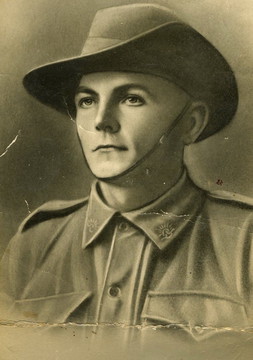
2996
PAHL, John Adolph
| Service Number: | 154 |
|---|---|
| Enlisted: | 17 January 1916, at Adelaide |
| Last Rank: | Private |
| Last Unit: | 43rd Infantry Battalion |
| Born: | Eden Valley, South Australia, Australia, June 1889 |
| Home Town: | Glenelg, Holdfast Bay, South Australia |
| Schooling: | Not yet discovered |
| Occupation: | Labourer |
| Memorials: |
World War 1 Service
| 17 Jan 1916: | Enlisted AIF WW1, Private, 154, 43rd Infantry Battalion, at Adelaide | |
|---|---|---|
| 9 Jun 1916: | Involvement Private, 154, 43rd Infantry Battalion, --- :embarkation_roll: roll_number: '18' embarkation_place: Adelaide embarkation_ship: HMAT Afric embarkation_ship_number: A19 public_note: '' | |
| 9 Jun 1916: | Embarked Private, 154, 43rd Infantry Battalion, HMAT Afric, Adelaide | |
| 4 Jun 1917: | Wounded AIF WW1, Private, 154, 43rd Infantry Battalion, Battle of Messines, GSW head | |
| 31 Jul 1917: | Wounded AIF WW1, Private, 154, 43rd Infantry Battalion, GSW shoulder | |
| 26 May 1918: | Wounded AIF WW1, Private, 154, 43rd Infantry Battalion, German Spring Offensive 1918, Gassed |
Help us honour John Adolph Pahl's service by contributing information, stories, and images so that they can be preserved for future generations.
Add my storyBiography contributed by St Ignatius' College
Pre-war:
John Adolph Pahl was born in Eden Valley, South Australia in approximately June 1889. He was 5”8 and a quarter; considering the average height of 5”2 in World War I, he was quite tall compared to others. He weighed 152lbs (68.9Kg), he had brown eyes, dark hair, and his complexion was “fresh” meaning he had fair and clear skin. He believed in the church of England as his religion. He lived in Glenelg which is in South Australia. Before the war, he worked as a labourer which is a job that requires high physical fitness. He was married to Mrs. Lilian May Pahl and had a child whose gender and age were not specified.
During War:
On the 17th of January 1916 at the age of 26 years and 7 months, he enlisted to serve in the war in Glenelg where he lived. He was put in the 43rd Infantry Battalion. The 43rd infantry battalion was formed in 1916 and was South Australia’s contribution to the war. This battalion, plus the 41st, 42nd, and 44th battalions formed the 11th Brigade. The 43rd battalion went to the war in early 1916, stopping in Egypt for a brief period before returning to Britain to complete their training. On the 9th of June 1916, he had embarked from Adelaide on the HMAT Afric A19 and disembarked on the 20th of July 1916 in Marseille, France. He went to hospital many times during the war for reasons such as gunshot wounds, sickness, gas shell wounds, and infections which is a large number of times.
He was hospitalised in November 1916 for bronchitis, then in January 1917 for pterygia, before being wounded in action on 4 June 1917 at Messines. This saw him out of action for ten days. He was wounded for the second time on 31 July, this time in the shoulder. This saw him evacuated to England for recovery, and he returned to his battalion in November 1917. He was wounded for the third time on 26 May 1918, this time by gas. He returned to action in August 1918.
During operations on 29 September he performed actions which saw him recommended for the Military Medal, although he did not receive it. According to the citation:
During the operations near BONY on Sept 29th whilst casualties were frequent he dressed wounded and supervised the work of other stretcher bearers under heavy enemy artillery and machine gun fire. By his unceasing efforts he was able to evacuate a large number of his own comrades and in addition a number of American casualties.
After war:
On the 28th of August 1919, John Adolph Pahl arrived back in Australia safely but what he did after is unknown. He received the British war medal and the victory medal. The British war medal was a medal given to soldiers who had just entered and participated in the war and was nothing special while the victory medal was only issued to those who received the 1914 star medal, 1914-1915 star medal, or the British war medal of which he received and was given to every allied country who served in the war.









